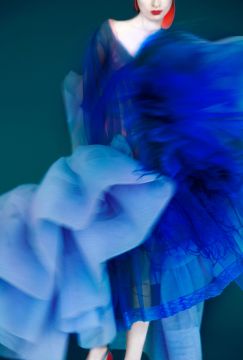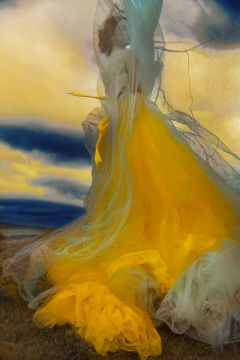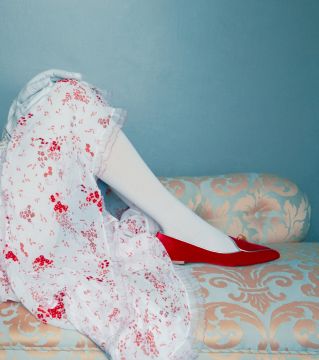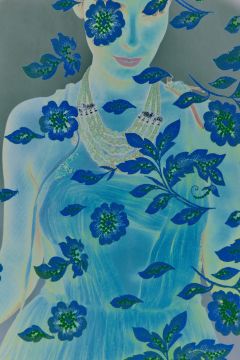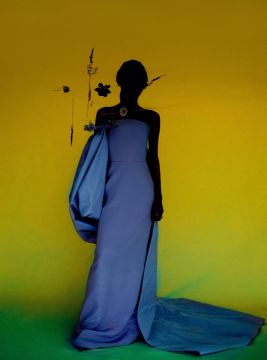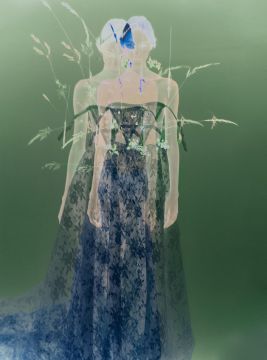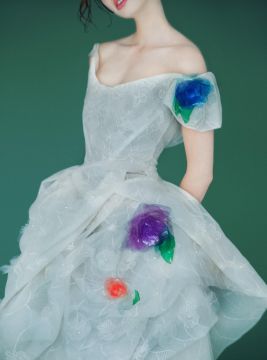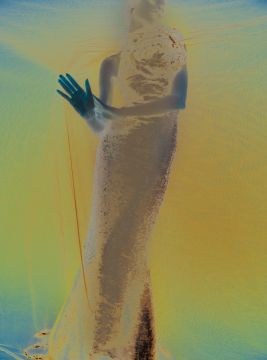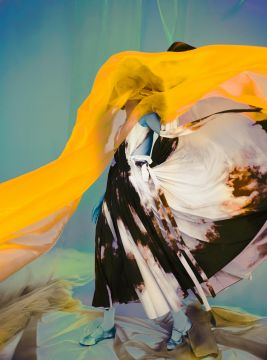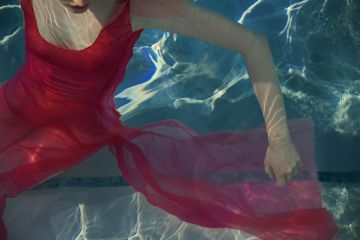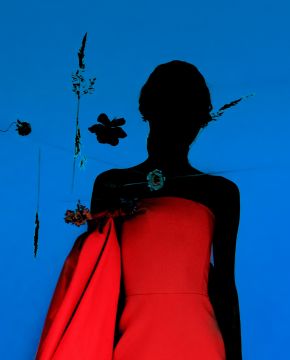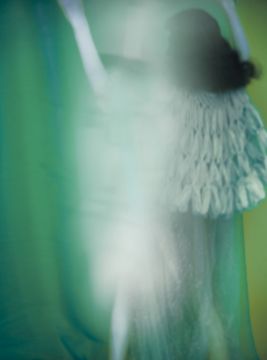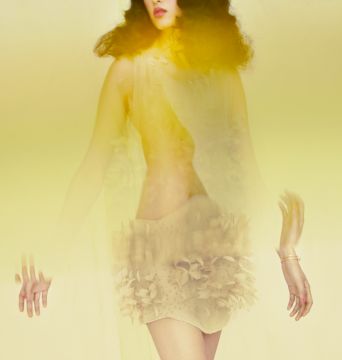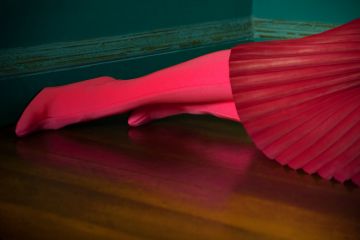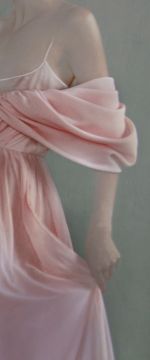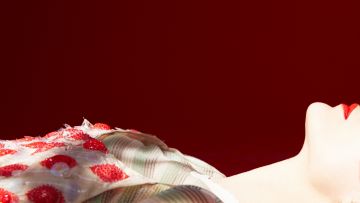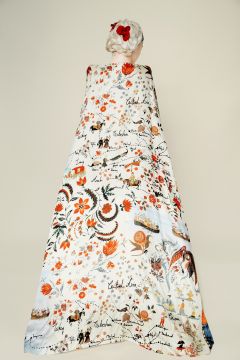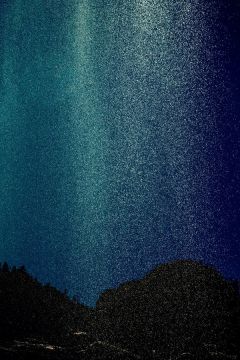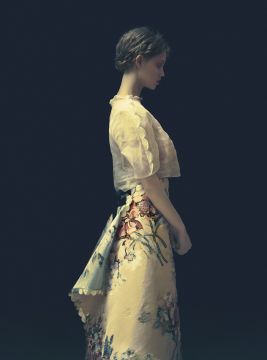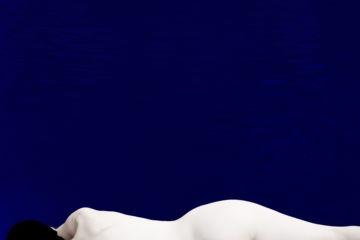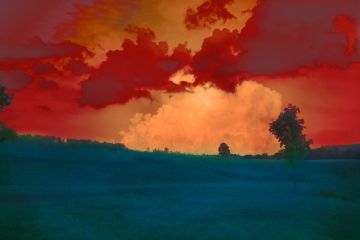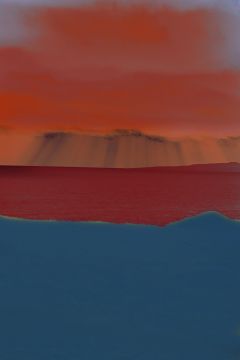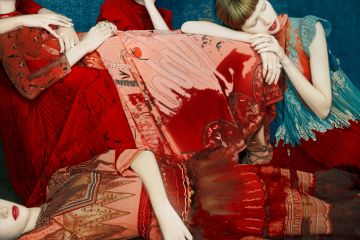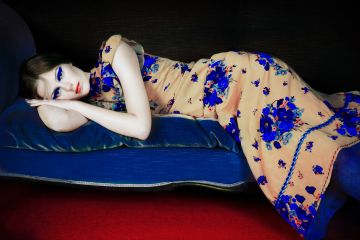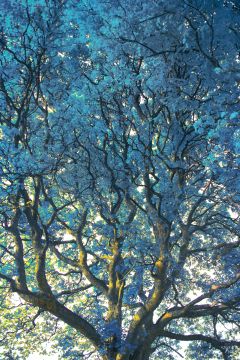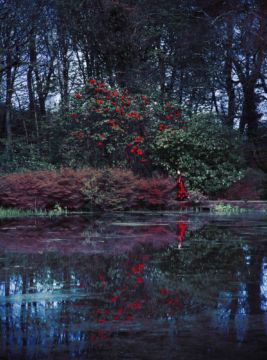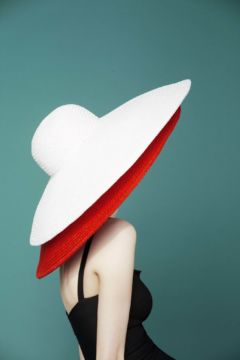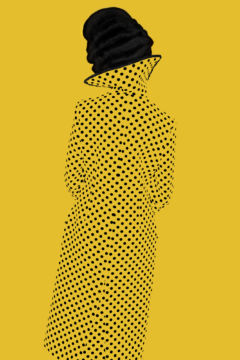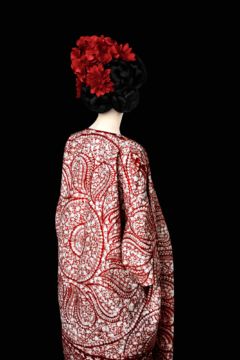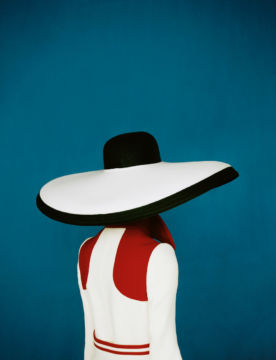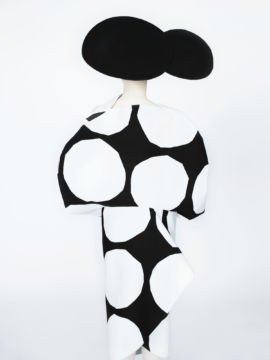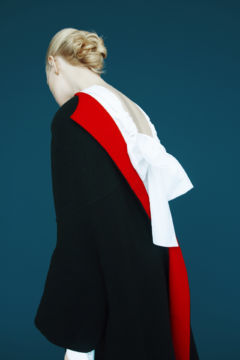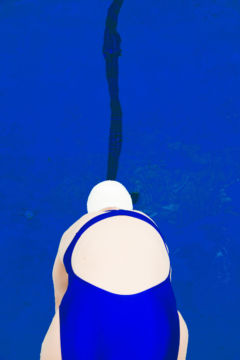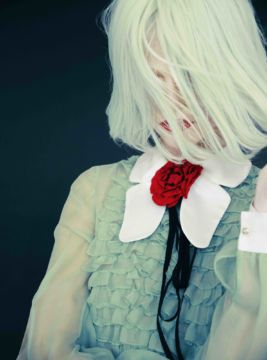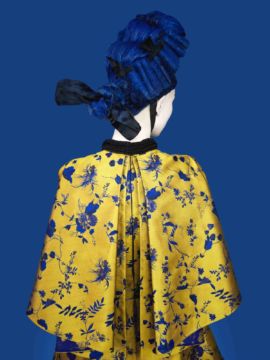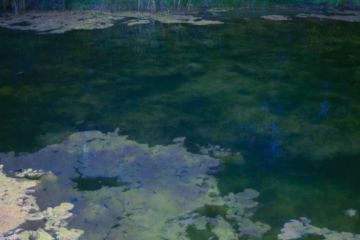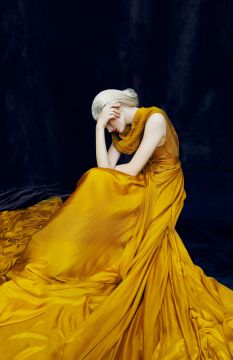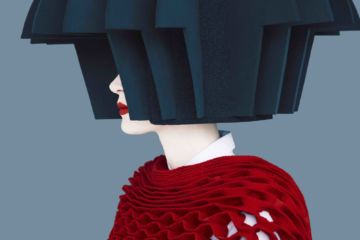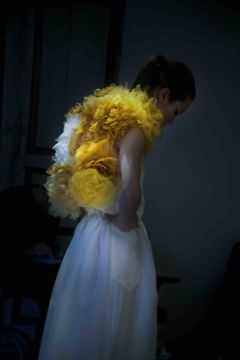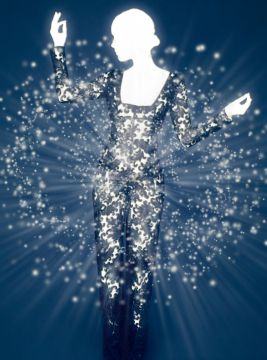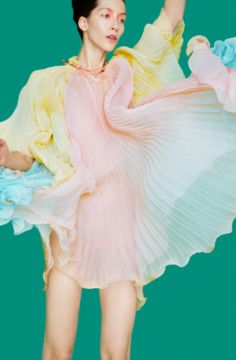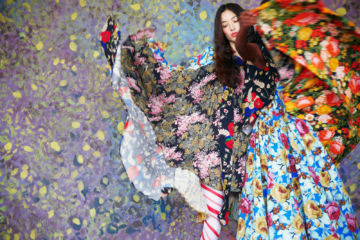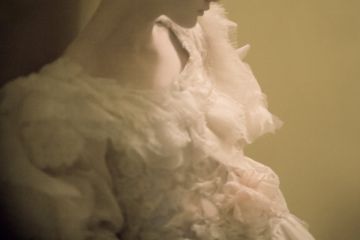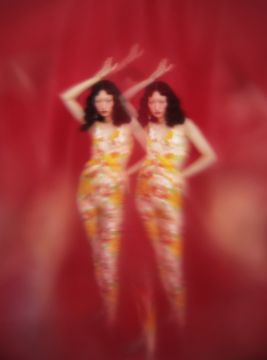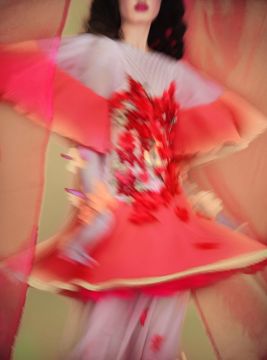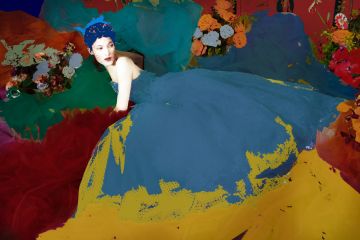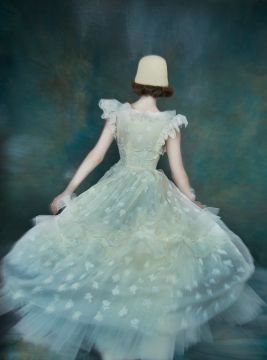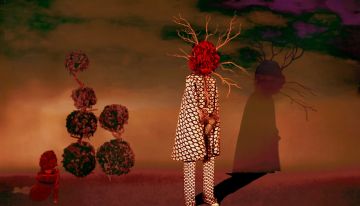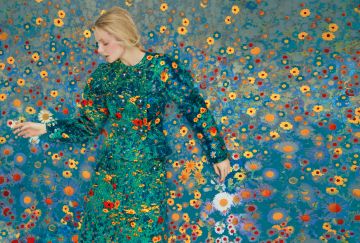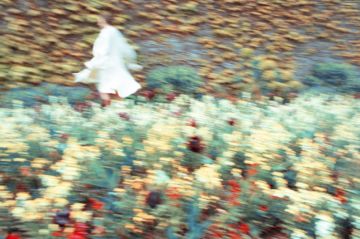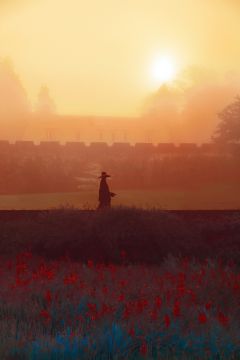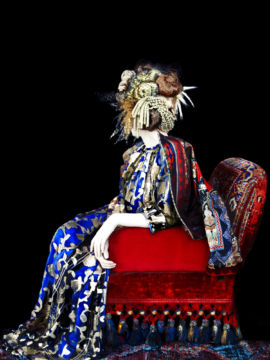New works
The Garden
‘The Garden’ is an ongoing body of work depicting Heck’s wife and two young sons in a variety of richly colourful surrounds. The photographs draw upon Catholic iconography and other mythic pictorial traditions to develop a colour-based narrative evocative of spiritual archetypes and the processes of dissolution and rebirth. The series moves through a singular world—a fairytale in which figures and settings become tableaux for hyper-concentrated tonal arrangements. Images are composited and oversaturated with colour to create painterly and surreal compositions in which the familiar and fantastic are merged. Completing its aesthetic fantasy through lavish clothes, gestures of dreamlike poignancy, and an Edenic environment, ‘The Garden’ expresses the supramundane innocence and spontaneity that art makes possible—a life lived in the direct, immediate experience of beauty. Shot predominantly at the family's home in New England, the series initially elicits comparisons with other contemporary photography confronting family life, such as Sally Mann’s ‘Immediate Family,’ or the work of Elinor Carucci. But though the subjects of Heck’s photographs are ostensibly his family, ‘The Garden's’ real subject matter is colour and the aesthetic possibilities of photography to create what it captures.
Die Neue Grafik
‘Die Neue Grafik’ is an ongoing series of graphic abstractions which use portrait photography to explore modernist design principles drawn from typography and other creative disciplines. Beginning as photographs shot in-studio, the images are then overlaid with colour layers to create the final compositions. Named for the seminal 1950s Swiss graphic-design journal, the series builds upon the Italian and Swiss design sensibility of the 1950s and ’60s. It represents an effort to subject photography to the same aesthetic principles that the European modernists applied to typography and other two-dimensional elements, including the reduction and simplification of colour and shape, an emphasis on sharp outlines and clearly defined negative space, and a movement away from naturalistic portrayal and toward the abstract and stylized. In this last respect, the series also represents a new step in Heck’s ongoing aim to push photography away from taking pictures and toward making pictures—abandoning documentary realism and human portraiture in favor of a greater realization of photography’s purely creative possibilities. In the images of ‘Die Neue Grafik’ the human figure is alienated, faceless and all but unrecognizable; reduced to shape and colour, it becomes another graphic element in two dimensions— no more or less figural than a capital letter.
Old Future
‘Old Future’ concretizes Heck's challenge to the assumption of photography as an automatic, documentary medium concerned with the transparent representation of reality. Selected from thousands of photographs for adherence to an ideal of visual beauty, the series’ images resist immediate consumption and everyday categorization, evoking—as its title suggests—both the classical and the futuristic. They are inherently made, more painted image than captured snapshot; in them, human and natural presences alike are means to an end. That end, here as in all of Heck’s work, is primarily colour, and the series’ selection and pagination emphasize that priority above all. Its secondary order, from nature- to studio-based imagery, thematically represents the movement of photography away from faithful representation and toward purposeful making. As the series progresses, its arrangements increasingly disguise and alienate the human figure in favor of painstakingly constructed abstract compositions, and reduce the natural forms of plants and animals to patterns of shape and colour.
